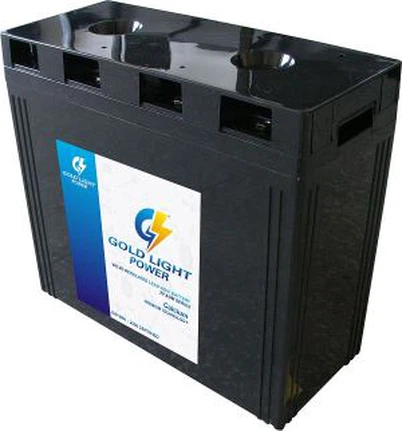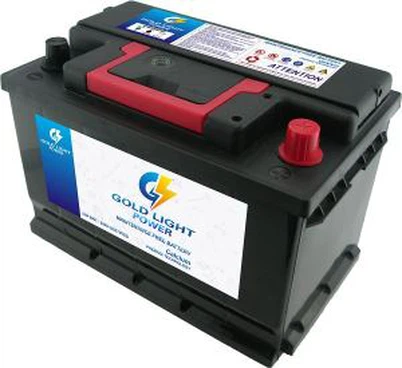How do battery plates work in a high - capacity battery?
Leave a message
In the realm of modern energy storage, high - capacity batteries play a pivotal role. From powering electric vehicles to providing backup energy for large - scale data centers, these batteries are the unsung heroes of our technological age. At the heart of every high - capacity battery lie the battery plates, which are the key components determining the battery's performance and capacity. As a trusted battery plates supplier, I am excited to delve into the fascinating world of how battery plates work in high - capacity batteries.
The Basics of Battery Plates
Battery plates are essentially the electrodes within a battery. They are made of different materials, depending on the type of battery. In a lead - acid battery, which is commonly used in high - capacity applications such as uninterruptible power supplies (UPS) and automotive batteries, the plates are typically made of lead and lead dioxide.
The two main types of plates in a lead - acid battery are the positive plate and the negative plate. The positive plate is coated with lead dioxide (PbO₂), while the negative plate is made of pure lead (Pb). These plates are immersed in an electrolyte solution, usually sulfuric acid (H₂SO₄). The interaction between the plates and the electrolyte is what enables the battery to store and release electrical energy.
The Chemical Reactions
When a high - capacity battery is being charged, an external electrical current is applied to the battery. This causes a series of chemical reactions to occur at the battery plates. At the negative plate, lead sulfate (PbSO₄) is reduced back to lead (Pb) through the following reaction:
PbSO₄(s) + 2e⁻ → Pb(s)+ SO₄²⁻(aq)
At the positive plate, lead sulfate is oxidized to lead dioxide (PbO₂) according to the reaction:
PbSO₄(s)+ 2H₂O(l) → PbO₂(s)+ 4H⁺(aq)+ SO₄²⁻(aq)+ 2e⁻
During the charging process, the sulfuric acid in the electrolyte becomes more concentrated as water is consumed in the reactions at the positive plate.
When the battery is discharging, the opposite reactions take place. The lead on the negative plate reacts with the sulfate ions in the electrolyte to form lead sulfate:
Pb(s)+ SO₄²⁻(aq) → PbSO₄(s)+ 2e⁻
At the positive plate, lead dioxide reacts with hydrogen ions and sulfate ions in the electrolyte to also form lead sulfate:
PbO₂(s)+ 4H⁺(aq)+ SO₄²⁻(aq)+ 2e⁻ → PbSO₄(s)+ 2H₂O(l)
These chemical reactions are reversible, which is what allows the battery to be recharged and used multiple times.
Factors Affecting Battery Plate Performance in High - Capacity Batteries
Plate Material and Composition
The choice of plate material is crucial for high - capacity batteries. For example, in lead - acid batteries, the purity of the lead used in the plates can significantly affect the battery's performance. Impurities in the lead can lead to self - discharge and reduced battery life.
Some high - capacity batteries use advanced plate materials to improve performance. For instance, Sealed Calcium Lead Acid Battery Plates Unformatted for Vrla and UPS Battery incorporate calcium into the lead alloy. Calcium helps to reduce water loss during charging, making the battery maintenance - free and increasing its overall lifespan.
Plate Surface Area
The surface area of the battery plates also plays a vital role in determining the battery's capacity. A larger surface area allows for more chemical reactions to occur simultaneously, which means that the battery can store and release more electrical energy. In high - capacity batteries, manufacturers often design the plates with a porous structure to increase the surface area. This porous structure provides more sites for the chemical reactions to take place, enhancing the battery's performance.
Electrolyte Concentration
The concentration of the electrolyte solution affects the rate of the chemical reactions at the battery plates. In a high - capacity lead - acid battery, the optimal concentration of sulfuric acid is carefully maintained. If the electrolyte is too dilute, the battery's capacity may be reduced. On the other hand, if the electrolyte is too concentrated, it can cause corrosion of the battery plates and shorten the battery's lifespan.
The Role of Battery Plates in Different High - Capacity Applications
Automotive Applications
In automotive batteries, high - capacity battery plates are essential for starting the engine and powering the vehicle's electrical systems. Automotive Calcium Battery Plates Wet Battery Plates for Maintenance Free Car Battery are designed to withstand the high - current demands of starting a car engine. The calcium - lead alloy used in these plates helps to reduce water loss and improve the battery's resistance to vibration, which is common in automotive environments.


UPS Systems
Uninterruptible power supplies (UPS) require high - capacity batteries to provide backup power in case of a power outage. Battery plates in UPS batteries are designed for long - term reliability and deep - discharge capabilities. They need to be able to store a large amount of energy and release it steadily over an extended period. The chemical reactions at the battery plates in UPS batteries are optimized to ensure that the battery can provide a stable power supply during critical situations.
Our Offerings as a Battery Plates Supplier
As a leading battery plates supplier, we understand the importance of high - quality battery plates in high - capacity batteries. We offer a wide range of battery plates, including those made from advanced materials such as calcium - lead alloys. Our plates are manufactured using state - of - the - art technology to ensure consistent quality and performance.
We work closely with our customers to understand their specific requirements and provide customized solutions. Whether you are in the automotive industry, the UPS market, or any other high - capacity battery application, we have the expertise and products to meet your needs.
Contact Us for Procurement
If you are interested in purchasing high - quality battery plates for your high - capacity battery applications, we invite you to contact us for procurement discussions. Our team of experts is ready to assist you in finding the right battery plates for your specific requirements. We can provide detailed product information, samples, and competitive pricing.
References
- Linden, D., & Reddy, T. B. (2002). Handbook of Batteries. McGraw - Hill.
- Dell, R. M., & Rand, D. A. J. (2001). Understanding Batteries. Royal Society of Chemistry.





